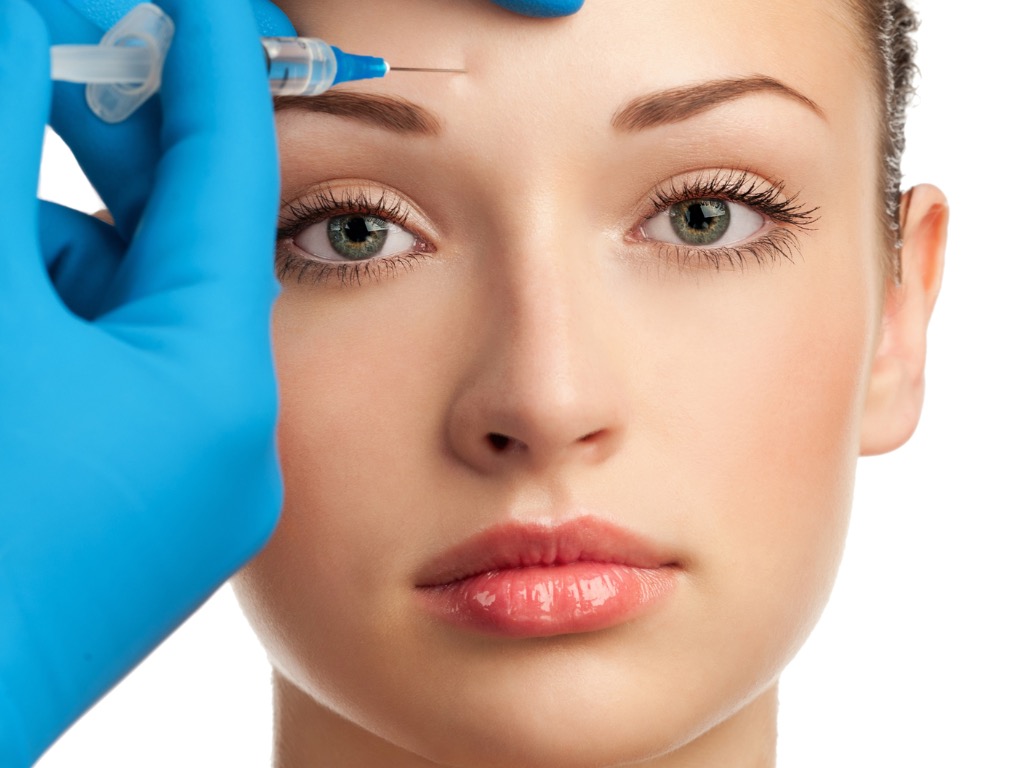Published on March 6, 2024 by Kenneth D. Steinsapir, M.D.
Botulinum toxin type A is a potent neurotoxin used to treat both cosmetic concerns and medical conditions. Over the years, the FDA has approved several botulinum toxin type A products, each with its specific indications and dosages. FDA strongly advises that each botulinum toxin is unique in its dosing. While this is technically accurate, it is not consistent with clinical practice. For all intents and purposes, these products are largely interchangeable for the aesthetic and medical services. One true difference is that the dosing scale for Dysport is quite different than the dosing for Botox and Xeomin and clinicians do differ in the precise formula used for converting between these dosages. In this blog, we’ll compare and contrast these products, focusing on their similarities and differences to help understand their applications better. All of these products are injected locally and act on the motor end plate of the muscle to temporarily weakening muscle contraction thereby affecting its function. When the muscle is a facial muscle of expression, it is possible to cosmetically enhance the facial appearance.

- Botox (OnabotulinumtoxinA)
Botox was the first botulinum toxin type A product approved by the FDA and has become synonymous with the treatment of wrinkles. Beyond its cosmetic applications, Botox is used to treat conditions such as chronic migraines, excessive underarm sweating (hyperhidrosis), overactive bladder, and certain muscular disorders. It is so famous that some confuse the brand name Botox with all products in this category.
- Dysport (AbobotulinumtoxinA)
Dysport is another botulinum toxin type A product approved for use in the U.S. It’s often used for aesthetic purposes, such as improving the look of moderate to severe frown lines between the eyebrows. It has been claimed that Dysport has a faster onset of action in some patients and can spread a bit more than Botox, but these observations are controversial. Thoughtful studies have not found much if any differences in diffusion or onset of effect among the various products. It is Dr. Steinsapir’s opinion that these perceived differences are insignificant but are used by competing marketers to boost their particular brand when the actual difference is inconsequential.
- Xeomin (IncobotulinumtoxinA)
Xeomin is unique because it’s a “naked” botulinum toxin, meaning it doesn’t have the protein additives found in Botox and Dysport. Marketers for the product claim that this may potentially reduce the likelihood of developing antibodies against the toxin, which might make it more effective in long-term treatment for some patients. There is some evidence for this but the truth is treatment resistance is much more complicated and not well predicted by the presence of antibodies. Xeomin is approved for the treatment of chronic sialorrhea (excessive drooling), upper limb spasticity, cervical dystonia, and frown lines.
- Jeuveau (PrabotulinumtoxinA)
Jeuveau is the newest botulinum toxin type A product approved by the FDA, primarily for cosmetic use to treat glabellar lines (frown lines). Marketed as “Newtox,” it’s been positioned as a direct competitor to Botox in the aesthetic market. Some reports suggest Jeuveau may offer a slightly quicker onset and similar duration of effect compared to Botox, but more long-term studies are needed to fully understand its benefits and differences.
Comparison and Contrast
Efficacy and Duration: All four products are effective for their FDA-approved indications. The duration of effect typically ranges from three to six months, depending on the individual, the area treated, and the product used. Experienced clinicians find very little difference among these excellent products.
Usage and Application: While all four are used for both medical and cosmetic purposes, their FDA approvals vary slightly in terms of specific indications. Botox has the widest range of medical applications, while Jeuveau is currently approved only for cosmetic use.
Formulation Differences: The presence or absence of complexing proteins (as in the case of Xeomin being a “naked” toxin) could influence a patient’s response to treatment, especially in terms of antibody formation. While there is evidence to support this, the issue of antibody formation and resistance to the effect of botulinum toxin is complex and not that relevant for cosmetic services. The presence of antibody formation is not equivalent to resistance to treatment.
Cost and Accessibility: Pricing can vary based on location, provider, and insurance coverage for medical indications. Cosmetic treatments are generally out-of-pocket expenses for patients, and pricing may be competitive depending on market dynamics. The most experienced injectors in any market charge a premium for their services. Because it is easy for these agents to be diluted without the knowledge of the consumer, low-cost treatments should be met with some skepticism. No one gives expensive treatment away for free.
In conclusion, while the FDA-approved botulinum toxin type A products share many similarities, key differences in their formulations, FDA-approved indications, onset of action, and potentially the duration of effect can guide physicians in choosing the most appropriate product for their patients. Whether for cosmetic or therapeutic purposes, the choice among Botox, Dysport, Xeomin, and Jeuveau will depend on individual patient needs, practitioner preference, and specific treatment goals. Know your injector. While nurses and non-medical personal are often injecting these agents, in many cases the best care comes from core physicians and surgeons practicing in the fields of plastic surgery, oculoplastic surgery, facial plastic surgery, and dermatology.
Are you ready to have cosmetic botulinum toxin treatment?
Call Dr. Steinsapir today to schedule your service.
310.274.7422
About Dr. Steinsapir
Dr. Steinsapir is a board-certified eye surgeon and fellowship trained in oculoplastic surgery and cosmetic surgery in Los Angeles and Beverly Hills where he specializes in balanced facial cosmetic surgery for natural results, with an emphasis on minimally invasive techniques, fast recovery time, and leadership in medical technology. Dr. Steinsapir has a private practice in Beverly Hills and also serves as a volunteer faculty at the Jules Stein Eye Institute, David Geffen School of Medicine at UCLA. Contact us today to learn how Dr. Steinsapir’s can make a difference for you.

